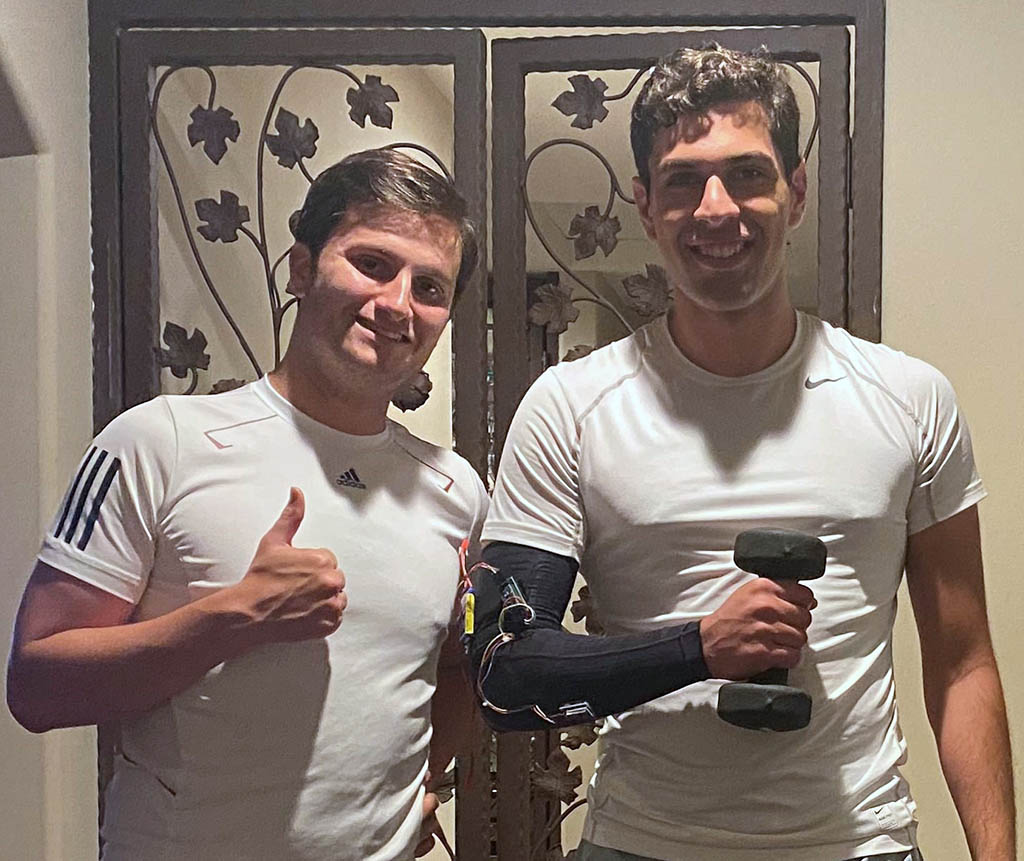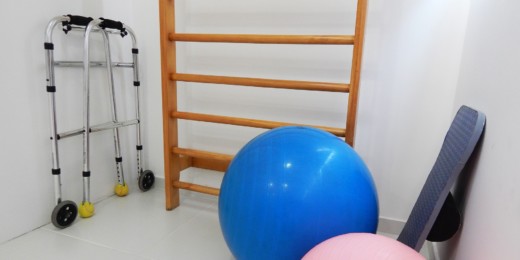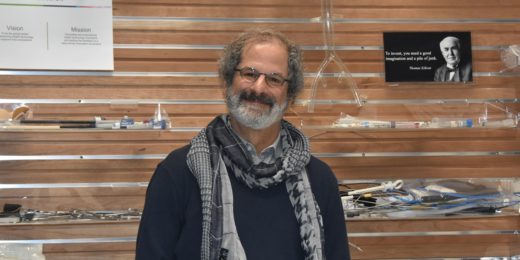As undergraduates in Stanford's Biodesign for Digital Health course, teammates Ryan Kalili and James Savoldelli set out to help injured athletes do their homework -- not their academic homework, but the part of their prescribed physical therapy regimen that must be done regularly at home to maximize healing.
"On average, six months of PT is needed after an injury like a ligament tear in the knee," said Savoldelli. "A significant share of this has to be done at home, but people find the exercises tedious and the experience lonely. As a result, most patients 'self-discharge,' in less than three months, leading to poor outcomes and a high rate of reinjury."
Kalili and Savoldelli uncovered this problem while searching for an important unmet need to address for their class project.
"We give the students a general area to investigate -- in this case orthopaedics," explained lead instructor Oliver Aalami, MD, a Stanford Medicine vascular surgeon and an experienced digital health inventor. "Then they follow the biodesign process to uncover real problems in care, understand them deeply and then create a novel solution using digital technology."
Learning about the problem
To get started, Kalili and Savoldelli interviewed numerous Stanford Health Care clinicians and surveyed patients who had received orthopaedic care. "It was the interviews with students that led us to focus on pain points in PT," said Kalili. "Resistance to doing exercises at home came up over and over, so we set out to learn as much as we could about the problem."
Kalili and Savoldelli decided to focus on young athletes as their initial target population. "There's a trend of increasing athleticism and related injuries in younger people," said Savoldelli. "Additionally, this group is highly tech-savvy and likely to find a digital solution appealing."

The team's first solution concept was to increase patient engagement and adherence by creating a virtual competitive community among physical therapy patients. Over time, however, they realized their idea could offer an even bigger benefit by also helping patients do their at-home exercises more accurately.
"When you have physical therapy, your therapist tells you immediately if your form is incorrect and helps you adjust your positioning for maximum benefit," Kalili explained. "We wanted to provide the same real-time feedback for people at home."
Providing a holistic solution
The result is Surge Therapy, a technology that combines a digital platform with a physical sleeve that has integrated sensors to track the position and speed of the limb and the angles of joints during exercise. The system allows therapists to deliver customized home rehab programs to their patients and monitor their progress.
It provides real-time feedback on accuracy and motivates patients through virtual group physical therapy sessions during which they can benchmark their progress against others, offering a little friendly competition.
"The way the solution has evolved makes it much more robust," said Pablo Pantaleoni, a digital health coach at the Stanford Byers Center for Biodesign and a vice president at Headspace, where he focuses on the development of digital therapeutics. "By providing a holistic solution, including digital and physical component, the Surge solution will appeal a much broader patient population than the team originally imagined."
Moving the project forward
The Digital Health course lasted only a quarter, but a Biodesign NEXT funding program gave Kalili and Savoldelli the resources to keep developing the project.
"The NEXT program extends the learning experience for students while also providing ongoing mentorship for projects that have a meaningful chance of making it into patient care," said Aalami.
Kalili and Salvoldelli graduated Stanford in June, but plan to keep moving the project forward; they are refining the software and building a more robust prototype for testing.
"What has really motivated us to keep going has been the connections with patients," said Savoldelli. "Every time we present our solution, the people in the room that like it the most are the ones who have gone through physical therapy. They become our biggest advocates. We build an emotional connection with them because they're thinking back to the time they had to go through this process."
Click here to learn more about Surge Therapy and other student heath technology projects.
Top photo by Peggy und Marco Lachmann-Anke. Middle photo courtesy of Savoldelli and Kalili.






